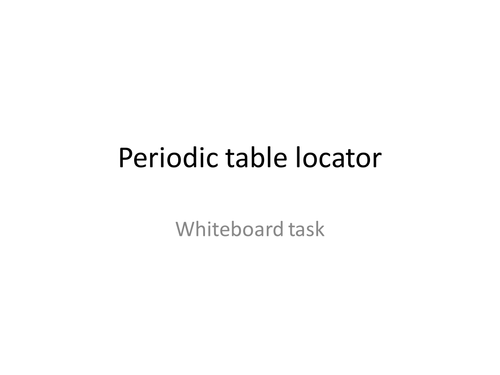













WORKSHEETS ONLY:
FOR LESSONS SEE
https://www.tes.com/teaching-resource/ks3-unit-7h-chemistry-chemical-reactions-7a-7b-elements-7c-metals-7d-compounds-7e-reactions-11561348
KS3 Unit 7H Chemistry - Chemical reactions
Aimed for High and low ability Year 7 but can be adapted for middle ability if required - all slides are different and differentiated - more information is found under each slide
8 Lessons and worksheets with answers
Lesson 7Ha: The air we breathe
Lesson 1-
To explain the difference between elements, compounds, mixtures and atoms
To interpret particle models of mixtures, atoms, elements and compounds
To be able to describe the difference between a mixture and pure substances
Lesson 2-
To recall that atoms can be joined together by bonds
To represent atoms using a model
To recall the names of the most important gases mixed in air
Lesson 7Hb: Earth’s elements
Lesson 3-
To be able to use the periodic table correctly
To explain how elements have been discovered
To be able to recall that different materials have different properties
Lesson 7Hc: Metals and non-metals
Lesson 4 -
To be able to identify the positions of metals and non-metals
To describe some common properties of metals and non-metals
To be able to explain the advantages of recycling metals
Lesson 5 -
To be able to recall how to use the periodic table
To be able to use experimental evidence to identify metals and non-metals
To consolidate by creating a poster
Lesson 7Hd: Making compounds
Lesson 6 -
To be able to describe the changes in properties between a compound and its constituent elements
To be able name simple compounds from two elements
To be able to write simple chemical formulae from molecular structures
Lesson 7He: Chemical reactions
Lesson 7 -
To recall examples of chemical reactions in everyday life
To investigate several reactions and to record observations
To be able to identify the changes in chemical and physical reactions
Lesson 8 -
To be able to identify the products and reactants using word equations
To model simple reactions using word equations
To be able to identify thermal decomposition reactions
8 lessons including practicals
and worksheets
Targeted towards specification
All extension questions available on each slide
Answers all underneath each slide
Support also available where necessary
AfL sections and mini quizzes
Reducing the need for photocopying
Enjoy !!!
PLEASE LEAVE FEEDBACK and REVIEWS
Something went wrong, please try again later.
Really helpful. Thanks for sharing
A range of really interesting resources, which teachers can choose from to support their class' learning. Many thanks for sharing these, really helpful.
Great set of resources, thank you for sharing!!
Report this resourceto let us know if it violates our terms and conditions.
Our customer service team will review your report and will be in touch.
